Desert of the Real: a visual travelogue about real and fictional infrastructures around Chott-el-Djerid / شط الجريد
Chott el Djerid is a salt lake stretching over more than 7,000 square kilometers in the barren desert of western Tunisia. It is so vast that it appears to reach the stars. Across this terrain, there are real and imagined infrastructures, not only for the extraction of salt and solar energy, but also for former film sets that awaken the collective unconscious of our globalized hyperreality.
As a symbol of wealth, salt has been historically a source of power struggles, shaping the recent history of the region. In salt flats, the salt water from the lake is piped over large areas so that it can evaporate through the natural action of the sun and wind. After evaporation, the remaining brine is directed to special areas called crystallisers, where the salt will settle naturally to be harvested, washed, stored and then made available to consumers once a year.
The arid desert is also home to energy production. The sun is captured, transformed, and fed into the existing infrastructures. A 10 MW solar power project built by a European company covers an area of 20 hectares and generates 16.9 GWh of electricity.
The salt lake of Chott el Djerid is an endorheic basin flooded in winter with rainwater and wastewater from the distant Atlas Mountains. The dissolved minerals form delicate shades of pink, soft greens, blues and other subtle colors. As spring turns to summer, crystalline structures are formed and the great heat of the Sahara transforms once again the shallow waterways into glittering desert.
The salt lake shares its name with a similar feature on the largest of Saturn's 62 known moons: Titan. The Djerid Lacuna basin there is similarly endorheic - the material evaporates to form a shallow lake bed. In Tunisia, the water leaves behind dissolved sodium chloride, calcium sulfate, magnesium sulfate, calcium carbonate, potassium chloride and magnesium carbonate. On the distant moon, it is the interaction of liquid methane and ethane rather than water that shapes the landscape.
Mirages form in the midday sun. Here, the intense desert heat manipulates, bends and distorts the light rays so that you actually see things that are not there. Trees and sand dunes float above the ground. The edges of mountains and buildings ripple and vibrate. Color and form merge into a dazzling dance. The physical transforms into the psychological. The heat crystallizes a new reality.
It has been suggested that in ancient Mesopotamia, or Sumer, there was a belief that the image of the sky may have corresponded to the image of the earth. This belief held that the features of the earth, including its lands, rivers, buildings, and temples, had counterparts in the stars.
It is possible that this view originates from the optical phenomenon of the Fata Morgana, which, with its melodic Italian magic word, is on everyone's lips.
Like search parties from an alien planet, the US film industry landed in the intermittently dry salt lake of Chott el Djerid towards the end of the 20th century. They came to shoot the science fiction saga Star Wars for a generation that grew up "without fairy tales". Director George Lucas took his cue from buildings of the Imaziɣen when he dreamed up alien architecture for the Star Wars series. The low and domed dwellings of the Imaziɣen became the model for the igloo-like houses of the fictional desert planet Tatooine; the home of Anakin and Luke Skywalker above which twin suns set. It is an abandoned zone where the characters of the film exist only through the imprints they leave behind.
The postmodern situation is sometimes described as one in which the hyperreal has replaced our reality. The original has disappeared and we can only access the copy of the copy.
For the film, however, not only fictional architectures were erected in the vast emptiness of the salt lake, but artificial craters were also excavated. The power of imagination shaped the natural form of the place. Space has been the subject of fantastic projections since time immemorial. Science and art, science and fiction, and reality and fiction have never been so close as in the face of outer space -that unreachable place of longing. Thus, science fiction turns out to be a realistic genre rather than a mythological one.
Although some architecture was added in post-production using Computer-Generated Imagery (CGI), here on the edge of the Sahara, all the major buildings from the films have been preserved. A village built for fiction still affects reality after the film crew has left. Its stories are transformed into a new crystal of reality.
One does not see space here so much as time, because different layers of time with different rhythms coexist simultaneously in this place. Imaziɣen make their rounds on diesel-powered quad bikes. In this way, they re-appropriate the space inspired by their cultural practices, trying to develop alternative tourism activities. A reappropriation of the reinterpretation of their own culture by North Americans.
Futuristic high-tech transmission towers turn out to be painted wooden structures, and they now function as tethering points for horses and parking for quad bikes.
Slowly, the plaster backdrops disintegrate in the glare of the sun. Strange pipes penetrate the wall; fantastic infrastructures without purpose. The retrofuturistic doors do not open.
The threshold of the desert has always been a geopolitical point of contention. It is a diffuse zone that is constantly shifting. Officially part of a territory, it eludes control. It is almost impossible to mark a line, draw a border and create an accurate map of the place. Because more and more, climate change is turning new areas into deserts.
Photo Gallery
Note
The images used in this visual essay are stills from a documentary film Desert of the Real (2022) by Michel Kessler and Pierre Musy.
Bibliography
Baudrillard, Jean. Simulacres et simulation. Collection Débats (Paris, France). Paris: Éditions Galilée, 1981.
Deleuze, Gilles, and Félix Guattari. Mille Plateaux. Collection "Critique". Paris: Éditions De Minuit, 1980.
Guattari, Félix, Architettura della sparizione, Milano: Mimesis Edizioni, 2013.
Žižek, Slavoj. Welcome to the Desert of the Real!: Five Essays on September 11 and Related Dates. London; New York: Verso, 2002.
Bio
Michel Kessler is an architect with a focus on real space. He founded his architecture practice Michel Kessler+ in 2022. Under Architecture Liminale. He assembles his paraarchitectural works between code, sound and film.
Pierre Musy is an architect and filmmaker. He is fascinated by the impact and alteration of fiction in everyday life. He also seeks to design spaces through the unconstructed by social relations.

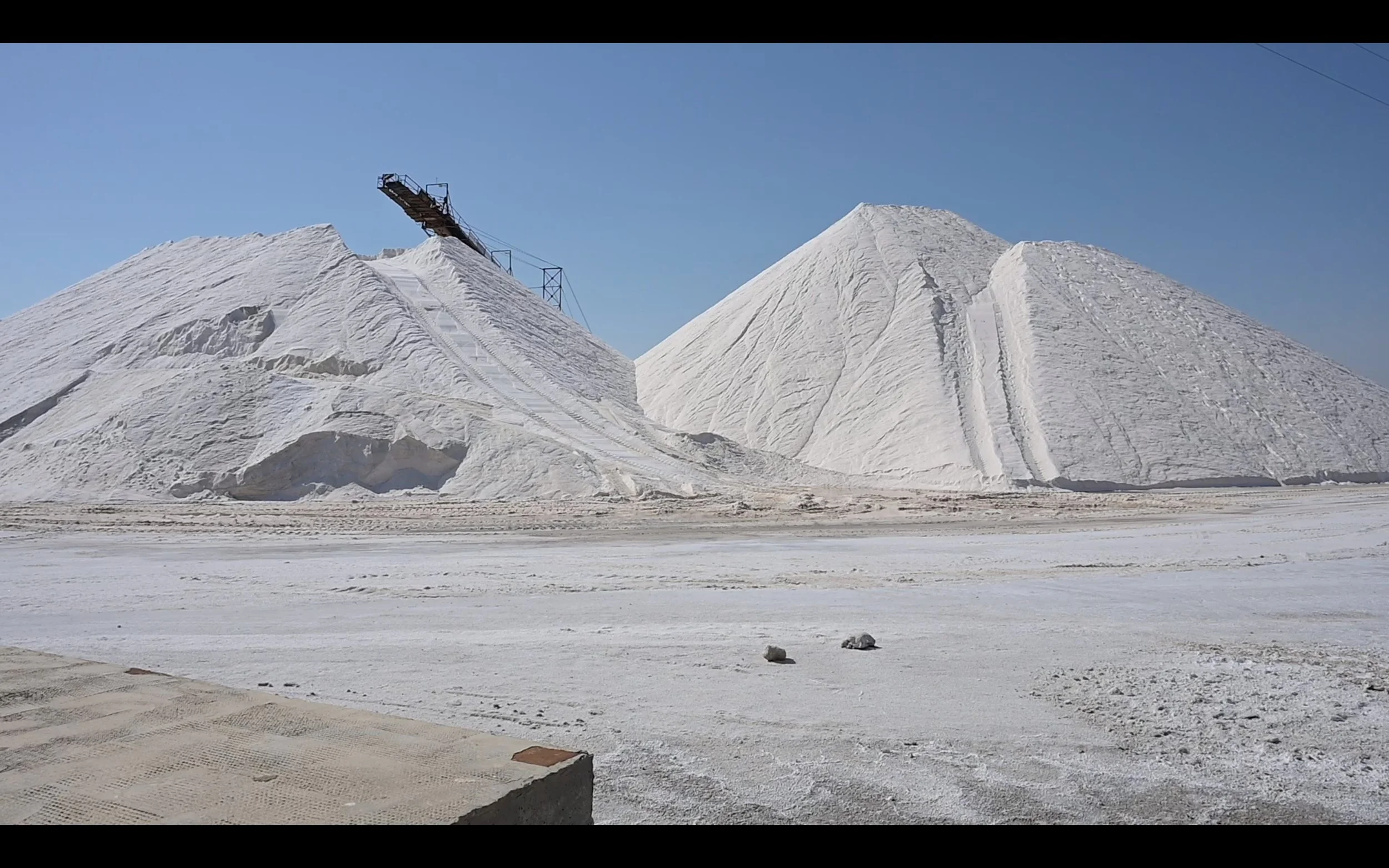
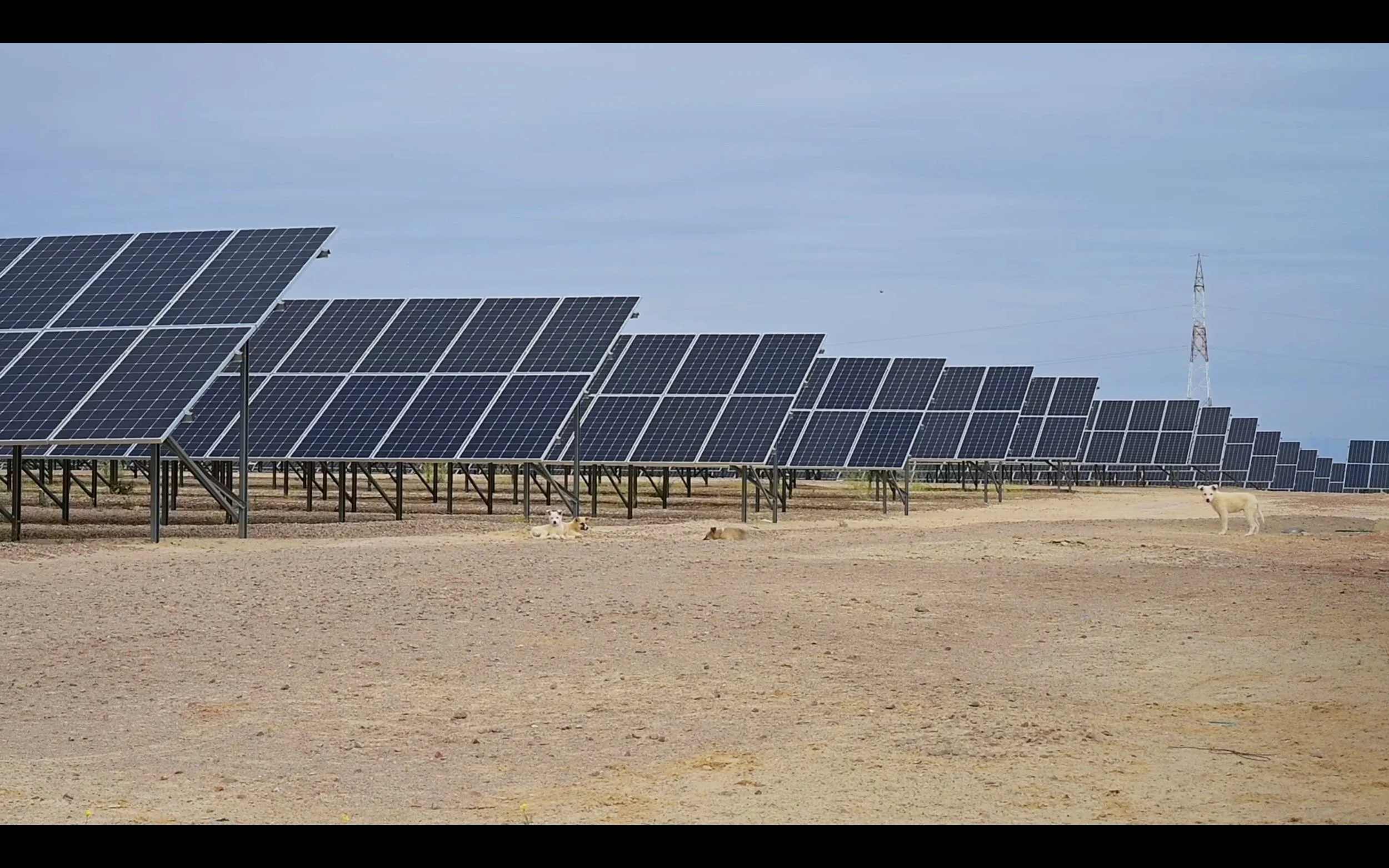



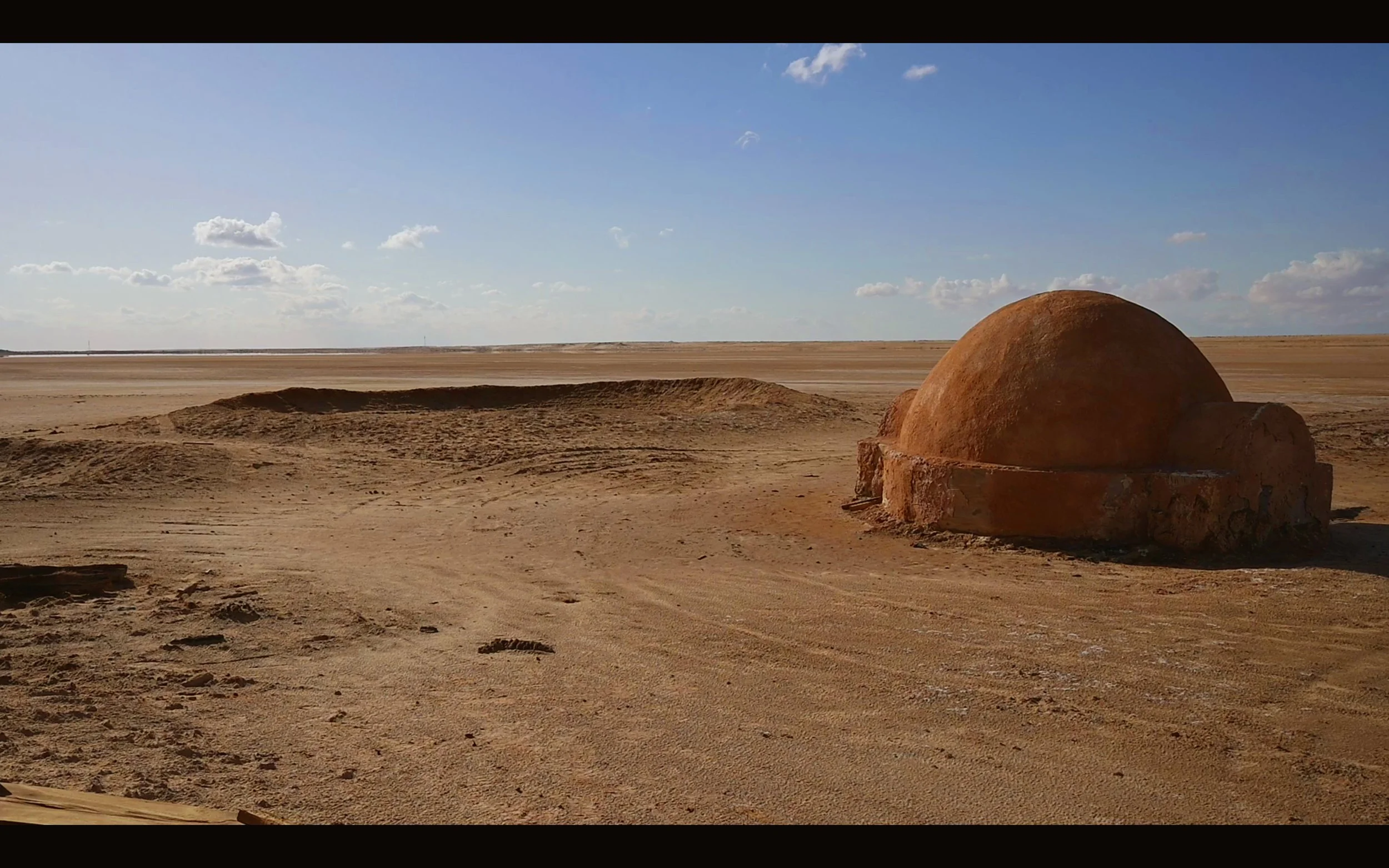

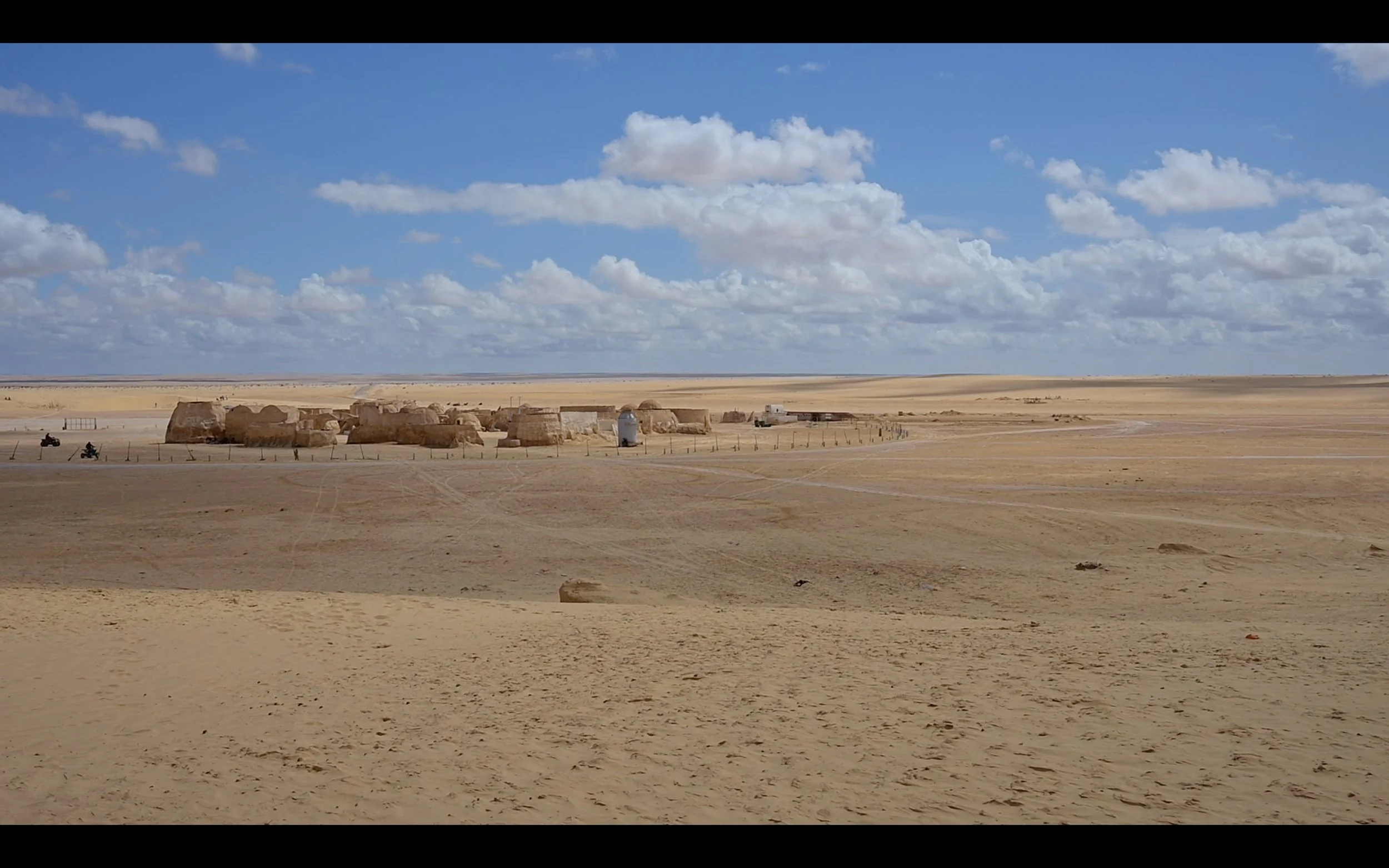
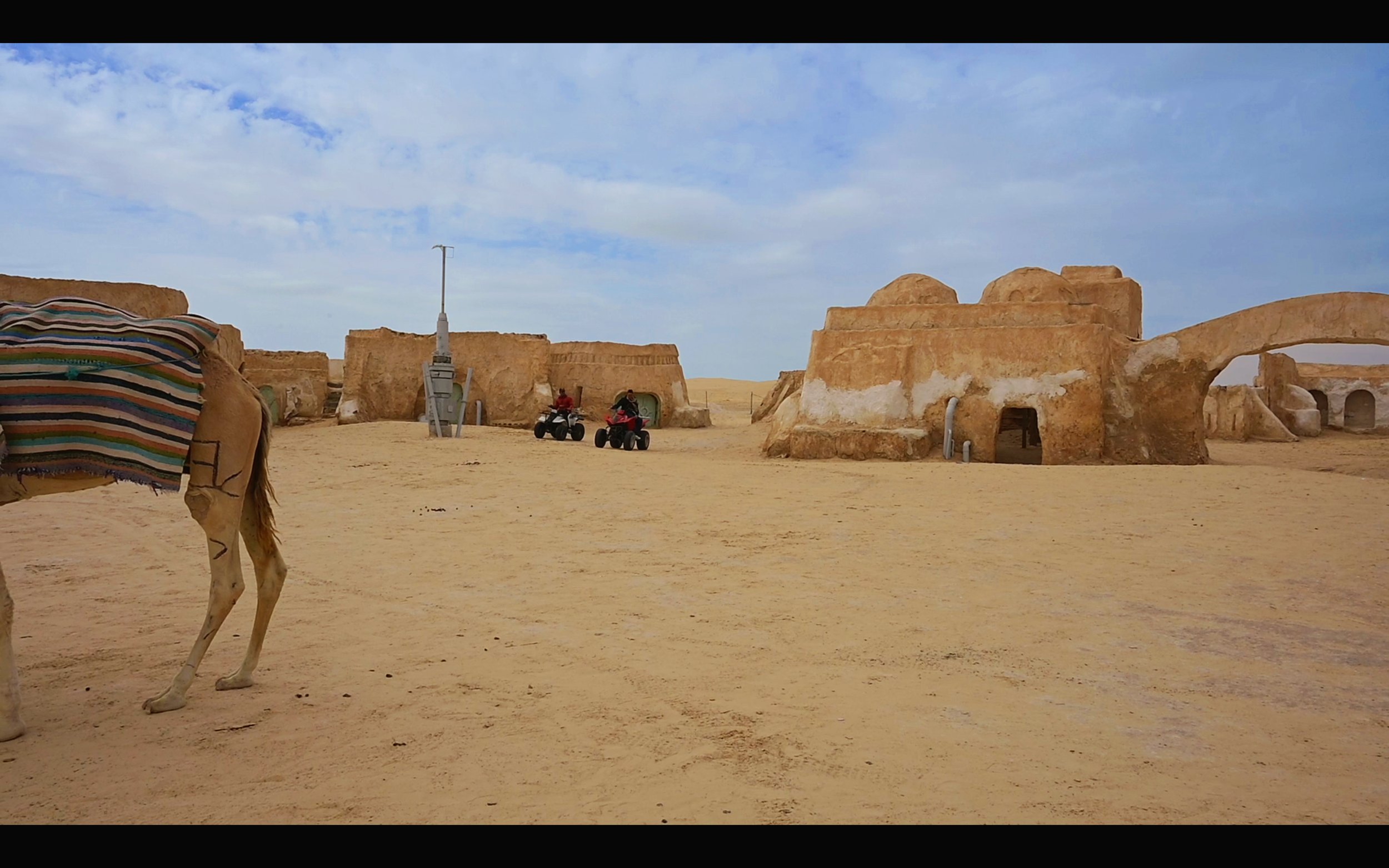


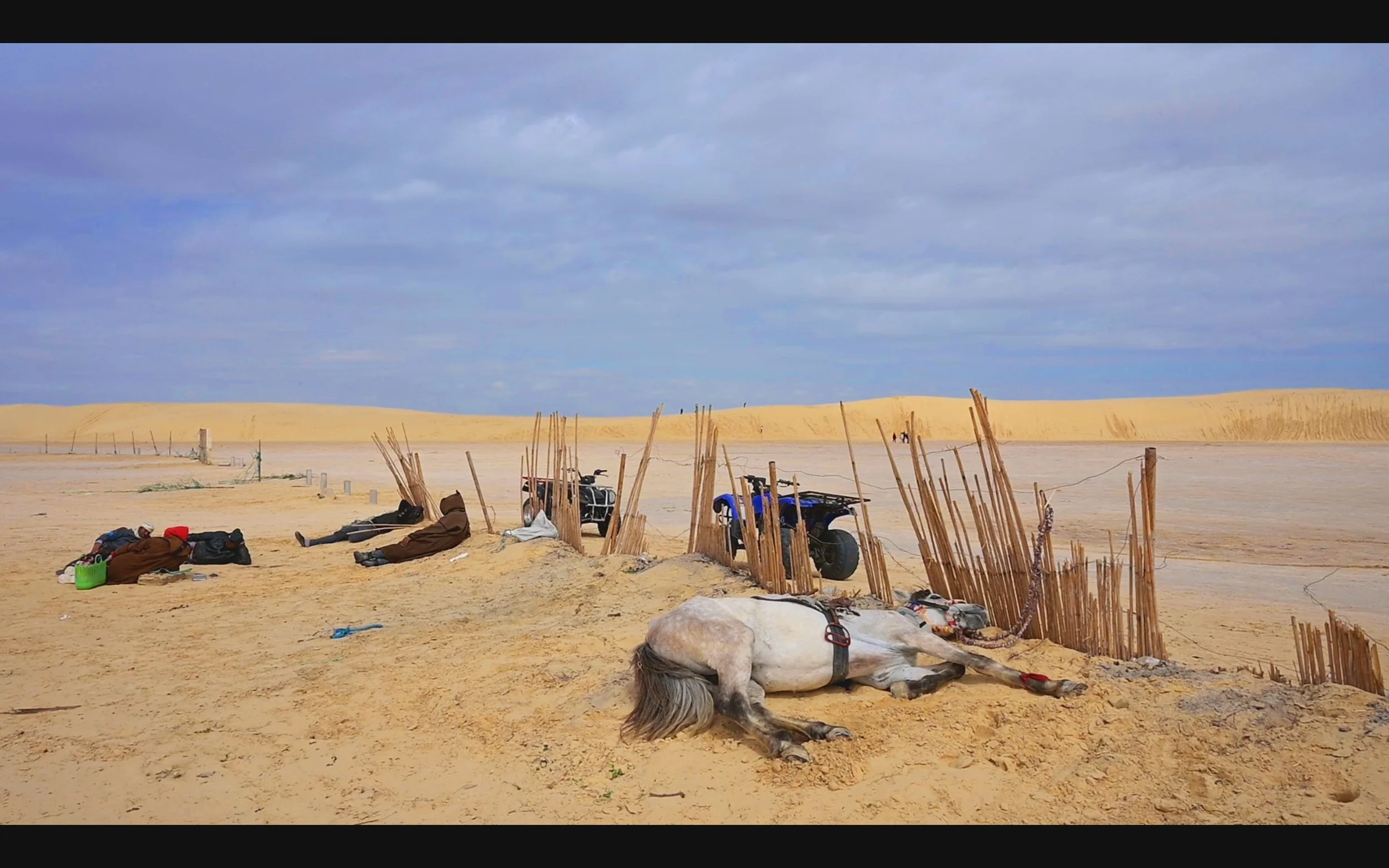














A Visual Essay by Marwa Shykhon